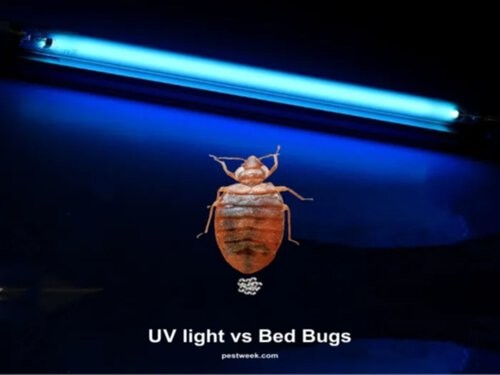Most people think that bed bugs are only a problem at home. If you share that belief, think again. These pesky bugs can survive anywhere, but one space that we often forget to consider is the car.
Bed bugs generally travel from one place to another by attaching themselves to personal belongings. Considering that you use your car to travel to various locations, bed bugs can easily find their way into it. The good news is that there several ways of making your car a bed bug free zone. This post outlines everything you need to know about bed bugs in your car including how to detect them.
Table of Contents
Can you get bed bugs in your car?
Yes, bed bugs can get into your car if they hitch a ride on your clothes or any other items. Even though they can move from place to place by crawling, it is improbable that they can crawl into the vehicle. This is because their movement is often limited to a 20 foot radius from their hiding spots.
Once these pesky bugs get into your car, they can survive for a long time. That said, they cannot multiply as fast as they would in a home environment. Adult bed bugs and nymphs feed on human blood and a select group of mammals such as bats. The nymphs can survive for some days but they eventually die because there isn’t much to feed on in a car. For a better understanding of a bed bug’s life cycle, read this post.
Telling if you have bed bugs in your car?
Once bed bugs get into your car, they hide in isolated spaces that make it challenging to find them. This does not mean that it is impossible to tell if you have bed bugs in your car. A thorough inspection of your vehicle will reveal signs of an infestation if you have a bed bug problem.
Bed bugs shed their exoskeletons five times before achieving full maturity. If you have bed bugs in your car you will notice those exoskeletons in various isolated areas of your car. Other signs that you need to watch out for include reddish stains on car seat fabrics, dark spots, and bed bugs themselves.
It is also important to inspect both your car and home if you notice some red and itchy spots on your skin. This is because the chances that you’ve already transmitted bed bugs to your home by the time the bite-marks appear are high. Bed bug bite-marks often appear several days after the initial bite
1. Inspecting your car
Inspecting a car for bed bugs is more complex than a routine home inspection. A vehicle’s interior is heavily congested thus, making it difficult for you to access all the areas that you need to check. If you don’t perform the inspection appropriately, you may miss some spots and fail to uncover an existing infestation. Here are some tips on how to inspect your car;
Take out any clutter from the car
Trash or clutter in the car provides perfect hiding spots for bed bugs. The first thing you need to do when inspecting your car is eliminate such potential hiding spots. Some of the things you need to remove include jackets, books, and coffee mugs.
Perform a thorough visual inspection
Embark on a thorough, precise visual inspection of your car once you’ve eliminated all clutter. You must keep an eye for the common signs of a bed bug infestation during this inspection exercise. Some of the areas that you need to focus on include;
- Seams in the car’s seats
- Underneath the seats
- The glove compartment
- The car’s console
- The ceiling panel
- Along the floor
- The cup holders
Use a UV flashlight
Using a UV light in bed bug inspection guarantees accurate results. Bed bug shells contain lots of phosphors that absorb UV light and make it easier to see bed bug exoskeletons.
Use double-sided tape in areas around car seats, floor mats and rugs
Areas around car seats, floor mats, and rugs are challenging to inspect visually even with a UV flashlight. Using a double-sided tape in such areas guarantees an accurate outcome. Pin the tape into hard to reach spots, and then pull it back. Once you do that, inspect it thoroughly to see if exoskeletons, eggs or actual bed bugs are attached to it. Please note that eggs and young bed bugs are hard to see. You must, therefore, look keenly.
2. Getting rid of bed bugs
Having bed bugs in your car is a dire situation that needs immediate rectification otherwise, you risk a home infestation. Here are some methods you can use to get rid of bed bugs in your car;
Clean your car thoroughly
The first thing you need to do when you uncover an infestation is clear out any clutter in your car. Removing clutter from the vehicle will eliminate any potential hiding spots. Next, clean the car thoroughly, far beyond the kind of cleaning that is usually done in a car wash. Here are some tips on how to clean your car;
- Take out and shampoo your vehicle’s floor mats, rugs and seat covers. Hang them out to dry in the sun.
- Vacuum the whole car while paying attention to potential hiding spots such as dark places and crevices.
- Steam clean the car’s interior.
Use Diatomaceous Earth
The recorded history of bed bug treatment notes that diatomaceous earth is one of the oldest treatment methods. It is an excellent treatment option for your car owing to several factors including the fact that it is safe to use. For it to work, it has to sit uninterrupted for a reasonable amount of time. You must wash the car’s interior thoroughly after using diatomaceous earth. This is because it can irritate your nose and throat if you inhale it.
Use heat
Extreme heat is a reliable tool for Bed bug extermination because they cannot tolerate it. Adult bed bugs will die if they are exposed to 119°F (48°C) for 90 minutes. You, however, need to crank the heat up to 125°F (52°C) for 90 minutes to exterminate all bed bug eggs. Steamers are the ideal method of heat treatment because they can blast heat into tiny cracks and crevices.
3. Monitoring bed bugs
Monitoring bed bugs in your car is as essential as watching out for them in your home. If bed bugs infest your car they are more likely to get into your home within a short time. Because of the congested nature of the vehicle’s interior these pesky bugs don’t have as many places to hide.
Using glue traps, interceptor trays, and sticky tape are excellent techniques of monitoring bed bugs in your car. It is, however worth noting that tapes are more reliable in a car compared to other monitoring options. All you need to do is apply a double-sided tape close to potential hiding spots. The bugs will unknowingly walk over the tape and get trapped.
4. Keeping bed bugs off
Keeping bed bugs off your home or car is a challenging task especially because they have spread across all the 50 states. You are at risk of contracting them everywhere including, the office, hotel rooms, and even from visiting friends and family. The best way to keep these pestilent bugs off your car is to check for signs of an infestation regularly. Other actions that can help prevent a car infestation include;
- Inspecting all second hand items before you put them in the car.
- Eliminating clutter from your car to minimize potential hiding spots.
- Cleaning the car regularly while employing the use of a vacuum cleaner.
- Transporting your clothes in an air-tight plastic back if you take them to a shared laundry facility.
Final Thoughts
Bed bug infestations in cars are rare. The probability of bed bugs finding their way into your car via your luggage, clothes and other items is, however, high. Car infestations most likely point to possible home infestations. This is due to the fact that these pestilent bugs are unlikely to crawl into your car by themselves. If you find a bed bug in your car, it is best to treat, both the vehicle and your home.
Frequently Asked Questions
Can bed bugs live in the car in winter?
If you live your car outside for some days in extreme cold climate it is unlikely that the bed bugs can live in it. These pesky cannot survive in extreme cold for an elongated amount of time. They can die within 48 hours if exposed to temperatures below 20° Celsius.
Will leaving your car in the sun kill bed bugs?
Bed bugs die under extreme temperature of over 119°F (48°C). It is, however, difficult to attain this temperature just by parking your car in direct sunlight. The best course of action is using conventional heat treatment methods.
How hot does a car have to be to kill bed bugs?
Bed bugs can withstand temperatures of up to 117°F (47° C). Your car has to be hotter than this temperature consistently for up to 90 minutes for the bed bugs to die.
Will I bring bed bugs to my house if I have them in car
Yes, bed bugs in your car can hitch a ride on your cloths, luggage, and other items. You will then, unknowingly bring them to your house.
Can I get bed bugs from someone riding in my car?
Yes. Bed bugs are hitchhikers. They can crawl off the individual riding in your car on to your car seat and eventually find their way to your clothes and other belongings. An individual can also get bed bugs if he or she rides in your infested car.
Where do bed bugs hide in cars?
They can hide underneath the fabrics of the car seat, underneath the seat, on floor mats, and in the glove compartment, to name a few.
Can I get bed bugs if I park my car near an infested house?
No, bed bugs are unlikely to crawl far from the resting area. According to an article by NBC News, these pesky insects only crawl within a 20-foot radius.

